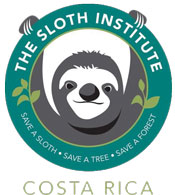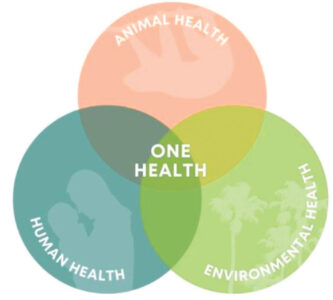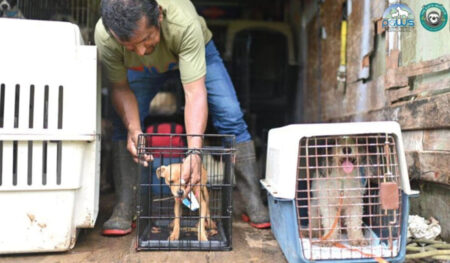Mitigating Domestic Dog-Wildlife Conflict in Costa Rica: Responsible Dog Ownership Practices
 Costa Rica is a country known for its stunning natural beauty, from sparkling oceans to lush rainforests. However, the rapid development of suburban areas is causing human activities to become closely intertwined with domestic dog-wildlife conflict. This conflict is characterized by urban development within, or effacing, natural wildlife habitats, and the presence of dogs in rural, peri-urban, and bordering forests in protected areas, which has been well documented.
Costa Rica is a country known for its stunning natural beauty, from sparkling oceans to lush rainforests. However, the rapid development of suburban areas is causing human activities to become closely intertwined with domestic dog-wildlife conflict. This conflict is characterized by urban development within, or effacing, natural wildlife habitats, and the presence of dogs in rural, peri-urban, and bordering forests in protected areas, which has been well documented.
The impact of domestic dogs on wildlife
Domestic dogs threaten native fauna through both direct and indirect routes. Indirect threats include disease transmission, competition and hybridization of wildlife. Although these indirect effects are non-negligible, predation continues to be the predominant threat imposed by dogs, and the prevalence of attacks on wildlife continues to rise. This predation is often recreational as it does not involve consumption of prey.
Dog attacks on native Costa Rican species have been documented for howler monkeys, birds, and sea turtles in the country and the nine-banded armadillo, lowland tapir and coati in other geographic locations. Domestic dogs present a considerable threat to sloths inhabiting Costa Rica too. Intact forests are an essential habitat component for arboreal species, providing a means of locomotion, refuge, and nourishment. The impact of domestic dogs is amplified in areas of habitat fragmentation. In efforts to navigate discontinuous canopies associated with urban development and human encroachment, sloths are forced to utilize terrestrial locomotion. Unfortunately for sloths, the terrestrial locomotion is laborious and clumsy, rendering them exceptionally vulnerable to predators on the ground. Numerous wildlife hospitals informally describe dog attacks as a leading cause of sloth intakes.
Mitigating the impacts of dogs on sloths and other wildlife
A multifaceted approach must be maintained, given the issue’s complexity. Mitigation strategies includes: habitat preservation, domestic dog management and population control, wildlife corridors facilitating forest connectivity, owner education, and government policy.

A collaborative approach to mitigate conflict between domestic dogs and sloths or other arboreal wildlife. Anthropogenic land use changes directly contribute to the degradation of wildlife habitats (a). Sloths are forced to enter novel environments in seek of resources and employ terrestrial locomotion in the face of discontinuous canopies (b). These land use changes likewise drive humans and their companion animals to forest edges or interiors (c), where domestic dog and sloths are then obliged to co-exist. The increased spatio-temporal overlap of dogs and sloths results in increased opportunities for predation (d) and resultant upticks of wildlife requiring medical care following these altercations. Addressing this problem requires a multifaceted approach, with target areas for intervention (yellow text and arrows) including habitat preservation, domestic dog management and population control, wildlife corridors facilitating forest connectivity, owner education, and government policy. Asterisks are used to denote interventions in which veterinary and other animal health professionals play a key role.
Sterilization programs, residential fencing to restrict roaming, and barriers to prevent access to protected spaces have been suggested as the most effective canine control strategies. Responsible dog ownership practices can also reduce indirect threats. For example, restraining dogs to prevent them from coming into contact with their feces can reduce the risks of disease transmission.
 One Health is an approach that recognizes the interconnectedness of the health of humans, animals, and the environment. It is based on the fact that the health of humans, animals, and the environment is closely intertwined, and it is impossible to achieve optimal health outcomes without considering all three. Ultimately, it aims to achieve optimal health outcomes for humans, animals, and the environment, in a sustainable and equitable manner.
One Health is an approach that recognizes the interconnectedness of the health of humans, animals, and the environment. It is based on the fact that the health of humans, animals, and the environment is closely intertwined, and it is impossible to achieve optimal health outcomes without considering all three. Ultimately, it aims to achieve optimal health outcomes for humans, animals, and the environment, in a sustainable and equitable manner.
At The Sloth Institute, we are helping solve this problem by working in collaboration with Pets of Aguirre Welfare Shelter (PAWS) to spay and neuter rescued cats and dogs, in addition to developing vaccination and deworming campaigns for low-income families. We involve ourselves because our research has shown* that sloths are susceptible to numerous diseases and parasites from both infected cats and dogs including distemper, mange, intestinal worms, ticks, and tick-borne diseases. In April 2023, we launched our first campaign with PAWS which offered free vaccinations to pets belonging to families in need, making pet care accessible to all. As a nonprofit organization focused on sloth conservation, we are committed to this cause and have allocated a significant portion of our resources toward it. We purchased 200 dog vaccines to kick off the campaign.
 In summary, the conflict between domestic dogs and wildlife in Costa Rica has significant impacts on biodiversity, including predation and the spread of zoonotic diseases. Mitigating these impacts is crucial for the protection and conservation of biodiversity in tropical regions. By promoting responsible dog ownership practices and adopting a One Health approach that emphasizes the interconnectedness of the health of humans, animals, and the environment, we can work towards a future where dogs and wildlife can coexist in a healthier, safer manner.
In summary, the conflict between domestic dogs and wildlife in Costa Rica has significant impacts on biodiversity, including predation and the spread of zoonotic diseases. Mitigating these impacts is crucial for the protection and conservation of biodiversity in tropical regions. By promoting responsible dog ownership practices and adopting a One Health approach that emphasizes the interconnectedness of the health of humans, animals, and the environment, we can work towards a future where dogs and wildlife can coexist in a healthier, safer manner.
//*Brown Natalie, Villada Ana and Trull Sam. Domestic dogs as a threat to sloths in Costa Rica: A clinical case report and review of the problem. Open Veterinary Science 2022; 3: 35–51
